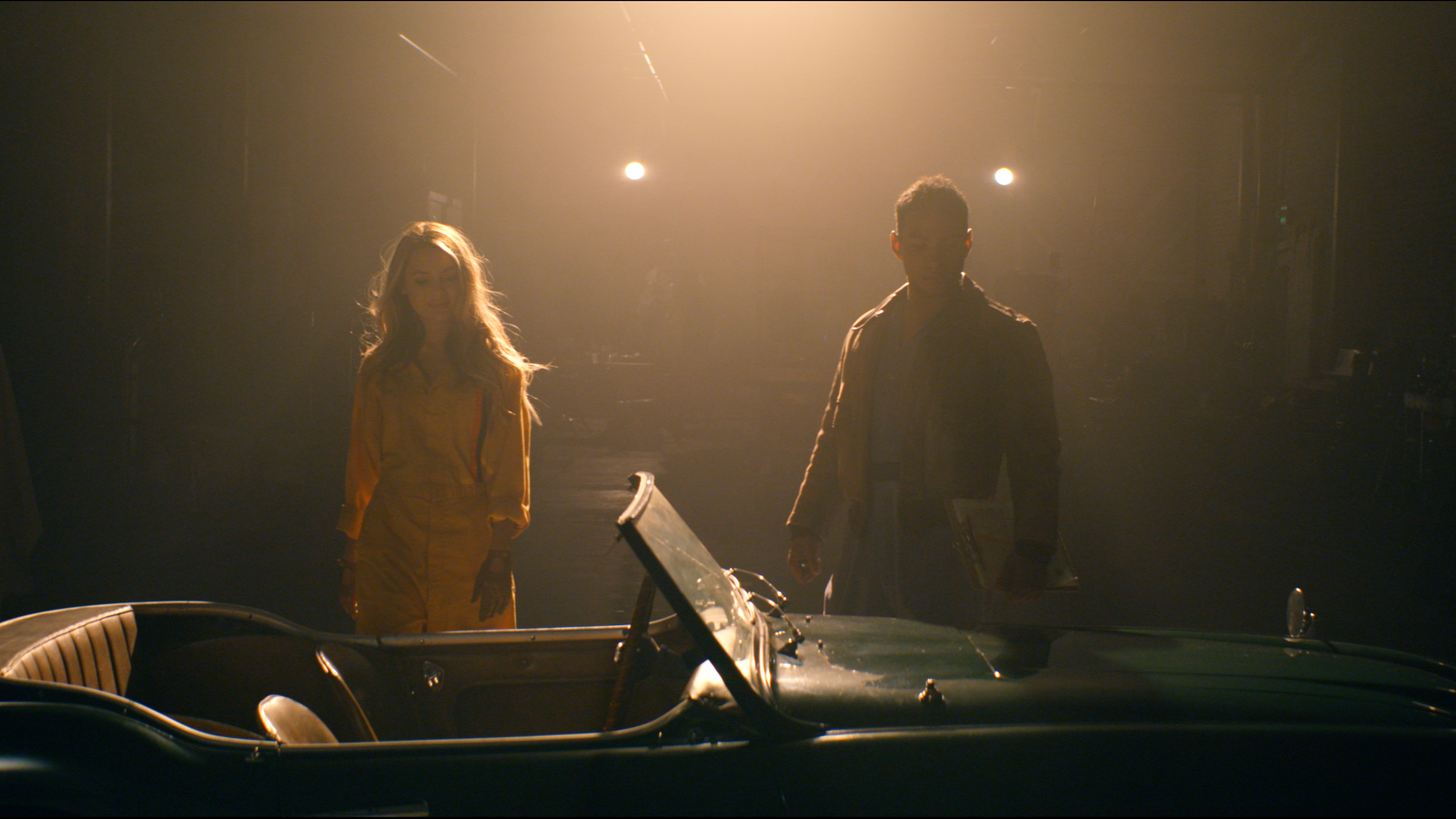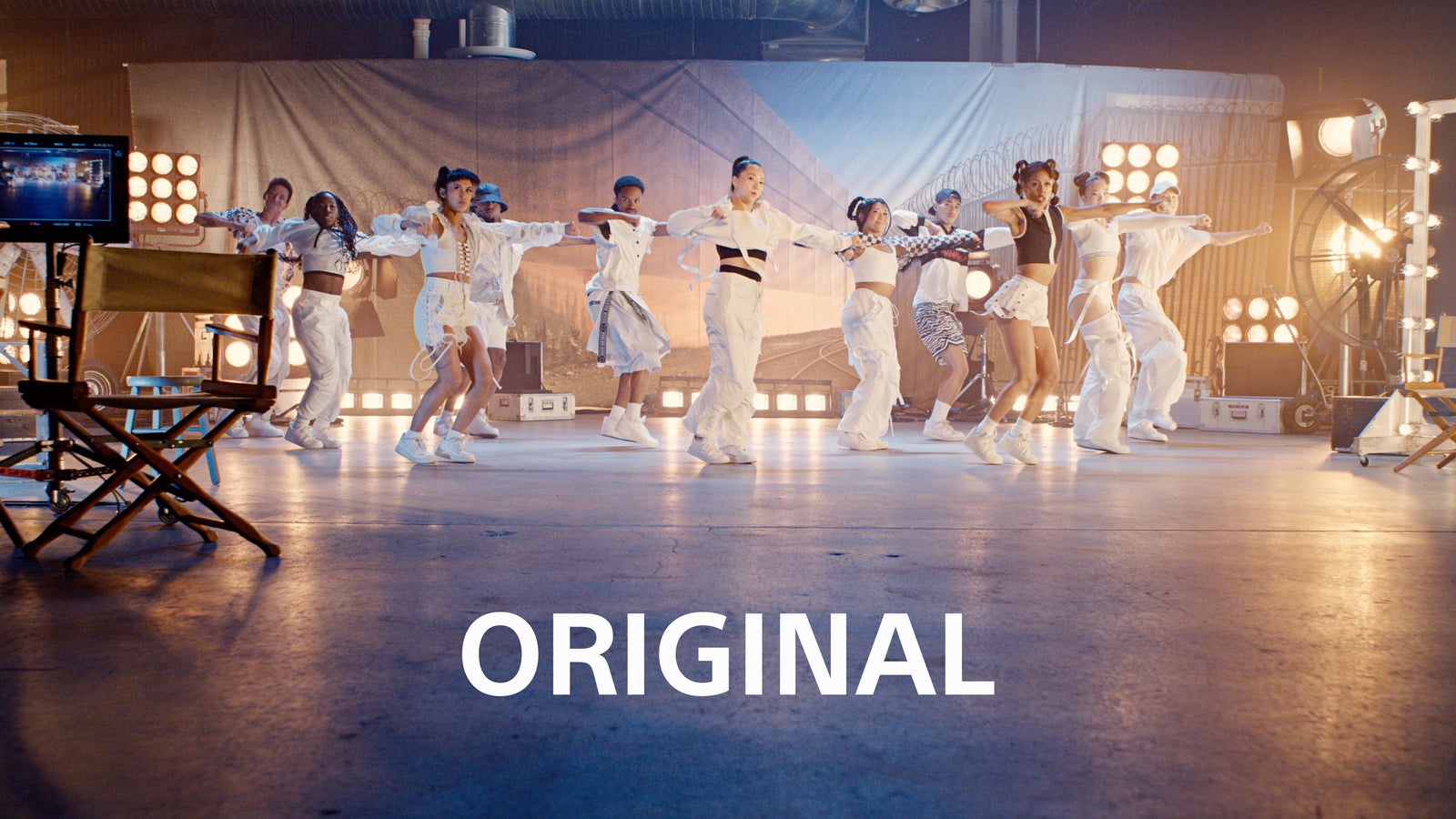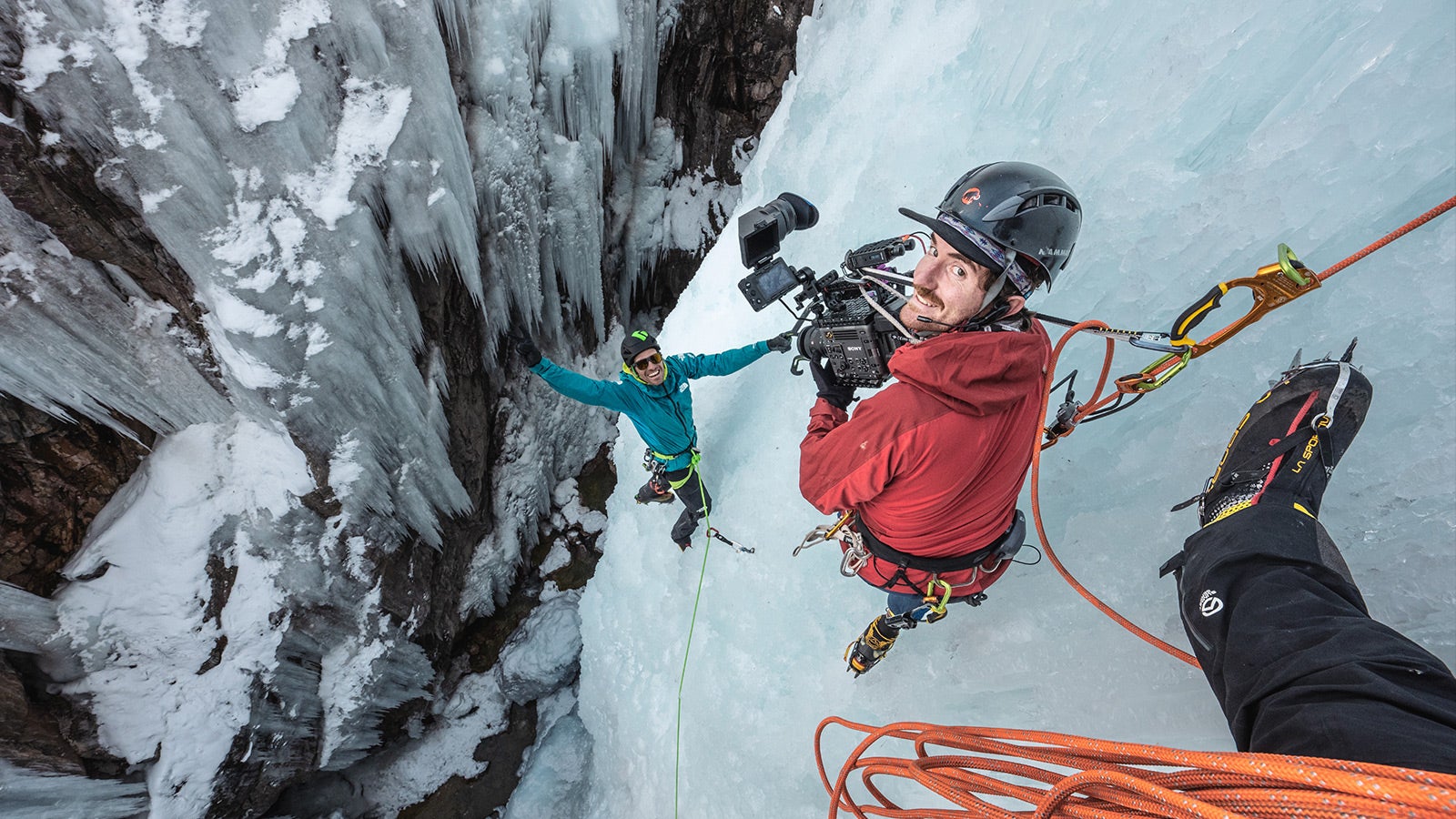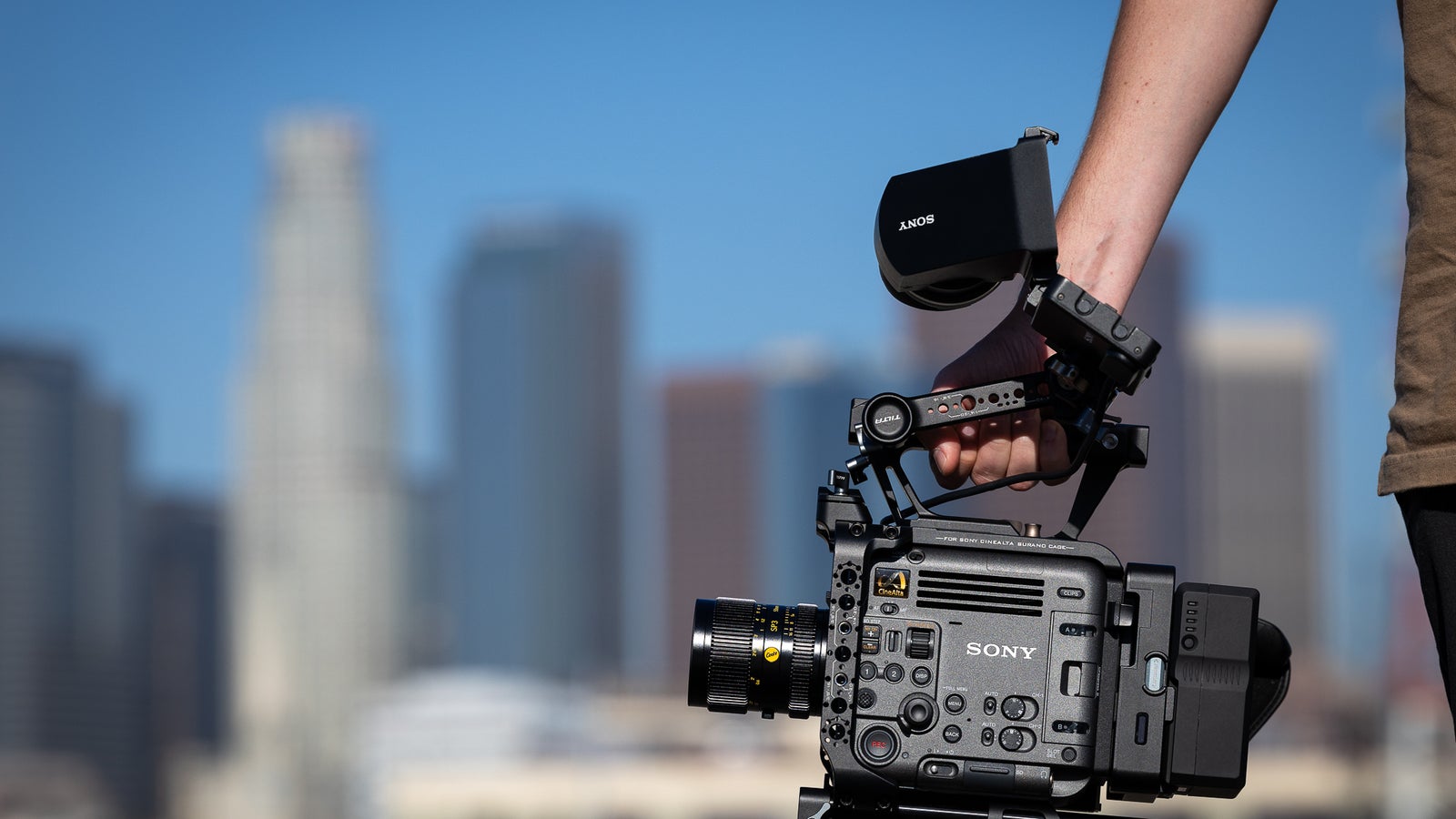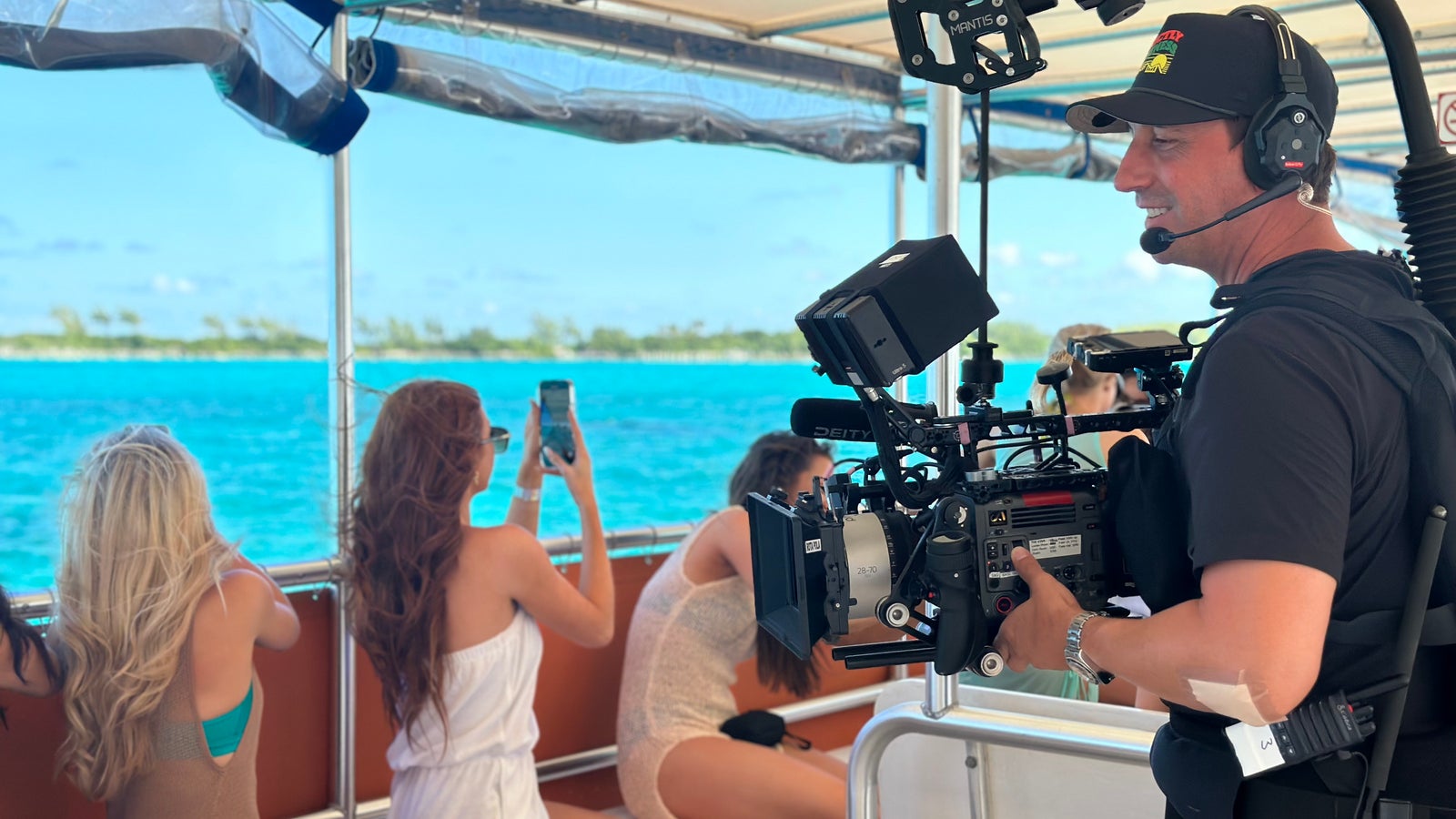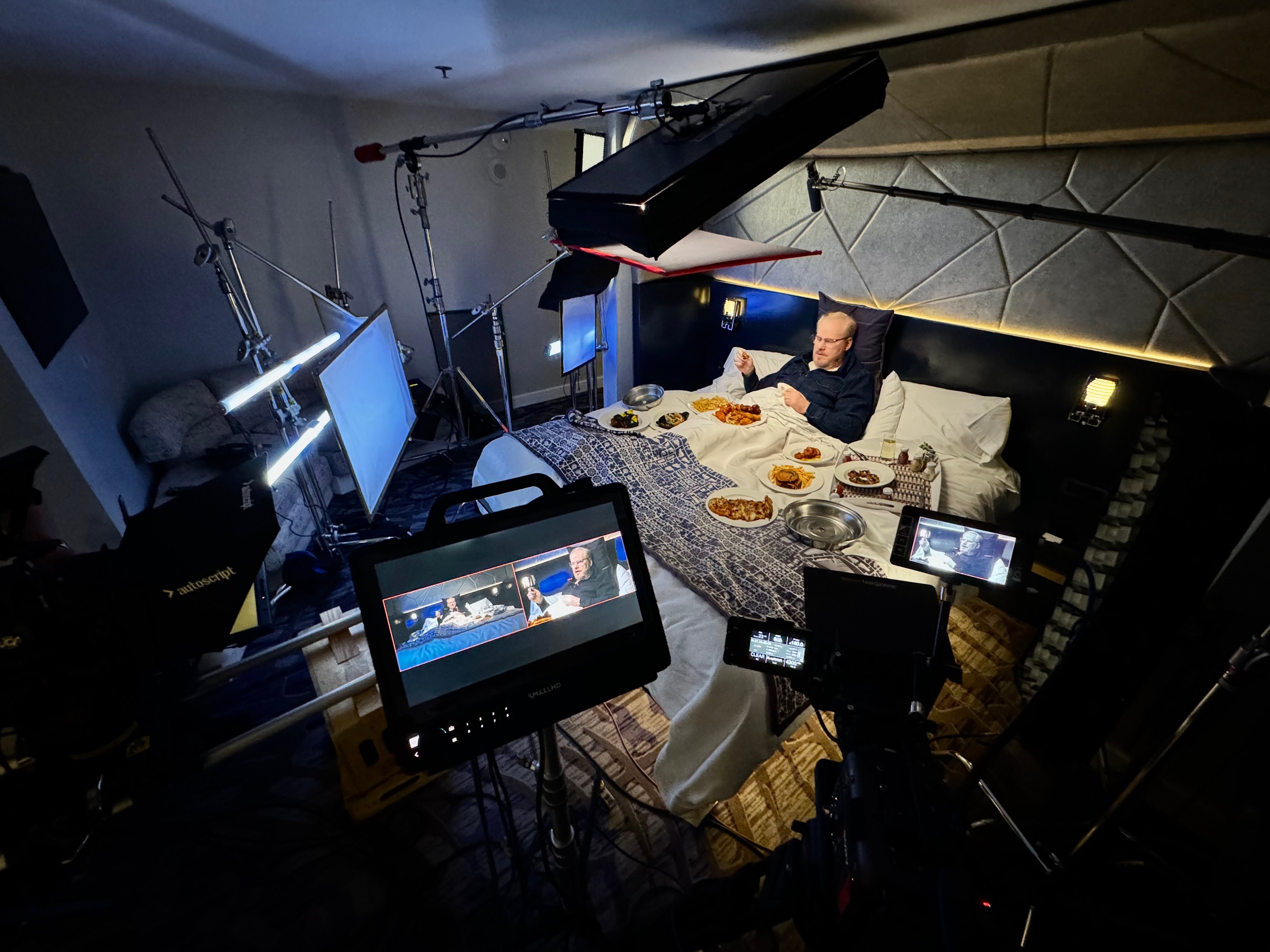
05-30-2024 - Filmmaker Interviews
Shot on BURANO: Chris Bell Captures Jim Gaffigan in Bed for FOX/NASCAR
By: Oakley Anderson-Moore
A few months ago, Seattle-based cinematographer Chris Bell got a phone call: Jim Gaffigan was in town. Would he like to shoot a spot with Gaffigan for FOX/NASCAR?
It’s the type of call that can either inspire excitement or sheer panic. For Bell, an experienced Director of Photography of over 35 years, with two new Sony BURANO cameras on hand, it was just another Sunday.
For the last decade, Bell has cultivated a focus on shooting high-end cinematography in sports television. He doesn’t shoot live sporting events, but rather, he captures iconic personalities in that world. To do this kind of work, Bell needs a mastery in the principles of lighting (to make people look good on camera), and the ability to do it fast.
“When we do a FOX feature, for instance, we might get a football player for 12 minutes, and that's all you get,” describes Bell. “So, when you're going into these jobs, you have to move very deliberately, very quickly. There's no take two. So, you have to nail it on the first try. It's a good way to get disciplined in this business.”
Shooting in a hotel room with Jim Gaffigan and the Sony BURANO
The opening of this Fox/NASCAR teaser for the Dega (Talladega Speedway) features Jim Gaffigan in bed with a considerable spread of room service, watching the race. To pull it off, Bell brought in his best team and gear.
“It was a relatively easy job – it's a guy lying in bed,” jokes Bell. “I guess the challenge is, how do you make a guy lying in bed interesting? That's my job, to see how I can utilize all these tools and techniques to help further the story without the cinematography sort of upstaging the talent. We want it to compliment what's going on, the comedy of the whole thing.”
Bell had his gaffer bring a Dolly and set up the BURANO as ‘A’ and ‘B’ cameras on Zeiss Supreme Primes.
Bell had his A camera on a dolly and B camera on a tripod. Zeiss Supreme Primes were used on both Burano cameras.
“I think we were on the 25mm, a wider lens, to make the dolly shot a bit more interesting. It proved to be my favorite part of the spot because you're revealing him. He's inviting you into his room and his domain, and the absurdity of all this food around him. So, to me, the dolly shot is what sold it. Kudos to my operator, Kirk Miller, who was able to pull focus on that shot, because we didn't have a first assistant to pull focus. Maybe in the future I would've used an autofocus lens, but we're still dipping our toes into that realm.”
“To make the dolly shot a bit more interesting I used a wider focal length: 35mm. It proved to be my favorite part of the spot because you're revealing him. He's inviting you into his room and his domain, and the absurdity of all this food around him. So, to me, the dolly shot is what sold it. Kudos to my operator, Kirk Miller, who was able to pull focus on that shot, because we didn't have a first assistant to pull focus. Maybe in the future I would've used an autofocus lens, but we're still dipping our toes into that realm.”
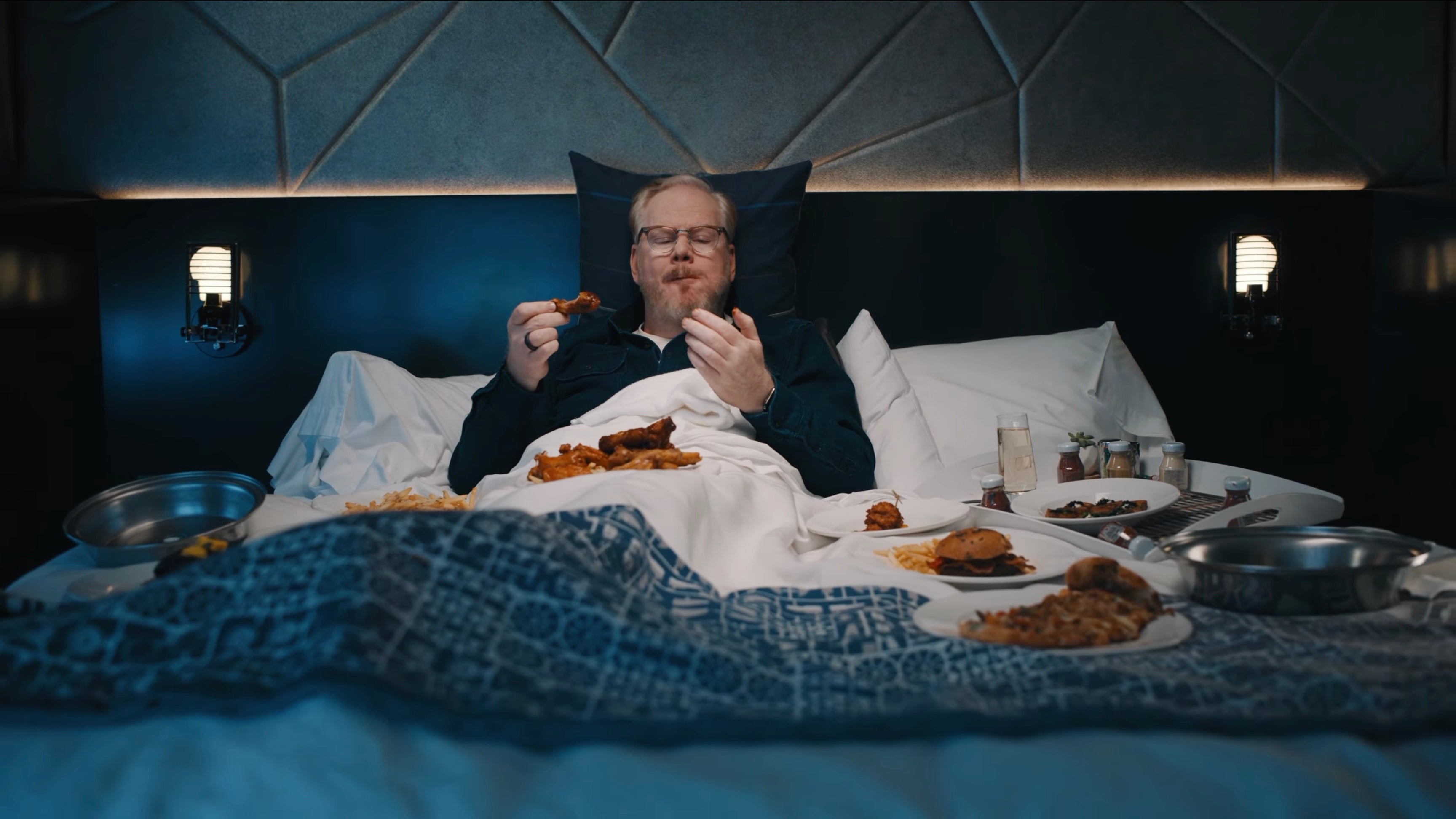
To give the post-production team the most media options to work with, Bell shot in 8K X-OCN LT, Sony’s 16-bit raw codec.
“We used the full resolution of the camera, that way, in post, we would have a lot of options to push in and pull out,” says Bell. “The director and I agreed that we wanted to utilize the X-OCN codec, so they would have a lot of color space to work with. And with the 8K resolution, post would have the option to re-size the image to their liking. Editors love resolution. The more they can push it, the better. If they are willing to go down the X-OCN route, there's no doubt that the 16-bit raw, the skin tones, and just the overall color fidelity on the BURANO is great.”
The DEGA teaser for FOX/NASCAR was exactly the kind of production that Bell has learned to thrive in: quality time is spent up front by Bell’s crew, followed by a 25-minute shoot with the talent.
“You really have to respect people's time, no matter what the job is,” says Bell. “But the nice thing is that we were given the resources to do this right. We had a decent sized lighting package, and I had my regular people that I work with. When you have those in place, it gives you time to then really sort of hone in on how you want it to look.”
Why two camera shoots are becoming the industry staple
Why did Bell become a dual-BURANO owner-operator?
“One of the trends in the last few years is every job is two cameras or more,” explains Bell. “That's for lots of reasons, but also editors and directors want lots of coverage so they can make a more interesting edit and have more options in post to tell their story. The reason I got into the BURANO was I was looking for a two-camera solution with the ultimate goal of providing the client with great images that look the same.
“Sometimes on these feature stories we do, during football season, there could be three, four, or five cameras. Sometimes we have them on steadicams or on a drone flying around. So that's why I decided to get into the BURANO system, with these particular jobs in mind. That's what we want, a camera that’s a tool that provides solutions. Having toolsets in your hands to adapt to a particular situation is really neat. It's really something that I've been kind of waiting for, for a long time.”

Sony BURANO: Lighting the hotel room for Jim Gaffigan’s glasses
To accentuate Jim Gaffigan’s humor, the lighting had to strike a balance. Not to mention, avoid reflections on the comedian’s signature eyewear.
“Jim wears glasses, so we have to be cognizant of reflections,” says Bell. “It was a fairly simple overhead lighting set up, a soft source overhead. We like to use large soft sources overhead, with a little bit of a side key. The gaffer and I concocted a plan to deal with the piano black headboard. We took some tubes, we put them through some diffusion, and then the gaffer set up the iPad app to control the tubes with a little TV flicker effect. When you watch the piece, it's subtle, but you'll see kind of a bluish reflection in the black headboard that mimics the reflection of a television. It just gave the shot a little bit more depth and a little more interest, other than just this dark void on his left and right side. It was simple but intentional. It’s comedy too, so it wasn't supposed to be terribly dramatic or upper contrasty. Comedy is better when you can see everything, I think.”
“Jim wears glasses, so we have to be cognizant of reflections,” says Bell. “It was a fairly simple overhead lighting set up, a soft source overhead. We like to use large soft sources overhead, with a little bit of a side key. My Gaffer, Kennan Muzzy concocted a plan to deal with the piano black headboard. Utilizing LED tubes through diffusion Kennan set up his iPad app to control the tubes with a TV flicker effect. When you watch the piece, it's subtle, but you'll see kind of a bluish reflection in the black headboard that mimics the reflection of a television. It just gave the shot a little bit more depth and a little more interest, other than just this dark void on his left and right side. It was simple but intentional. It’s comedy too, so it wasn't supposed to be terribly dramatic or too contrasty. Comedy is better when you can see everything.”
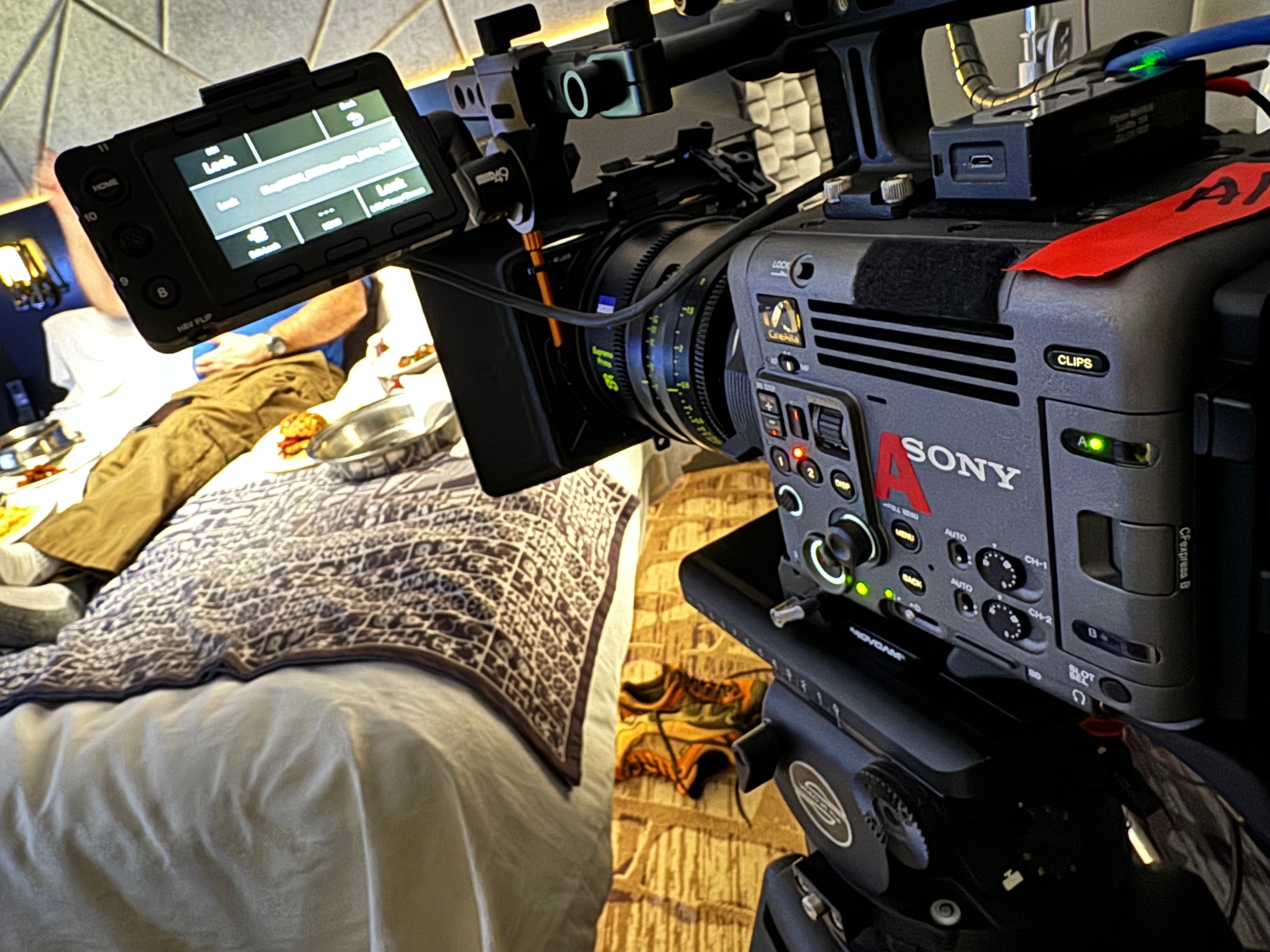
Why making a million mistakes is part of the process
You’ve heard it takes 10,000 hours to become an expert, but how about 10,000 mistakes?
“I think you get to a point in your career where you've been doing this a long time and you've made a million mistakes. Then things become secondhand. We're going to put a light here, we're going to put a light there, we're going to put the camera here. And then when it's all set in place, you have a pretty good idea it’s going to work. That experience brings the ability to come in and execute whatever the director's vision is, bring in your own take on that vision, and collaborate with that director hopefully to get what he or she wants. And then of course, the other most important thing is just being able to execute in a timely manner. You have to come in and you have to execute. You have to get it done and move on. We try to make it fun as well. Try to keep things friendly on set. It's a fun job. There are harder ways to make a living.”
“I think you get to a point in your career where you've been doing this a long time and you've made a million mistakes. Then things become secondhand. We're going to put a light here, we're going to put a light there, we're going to put the camera here. And then when it's all set in place, you have a pretty good idea it’s going to work. That experience brings the ability to come in and execute whatever the director's vision is, bring in your own take on that vision, and collaborate with that director hopefully to get what he or she wants. And then of course, the other most important thing is just being able to execute in a timely manner. You have to come in and you have to execute. You have to get it done and move on. We try to make it fun as well and I like to keep things friendly on set. I love what I do and the people I work with. It’s great fun!”
